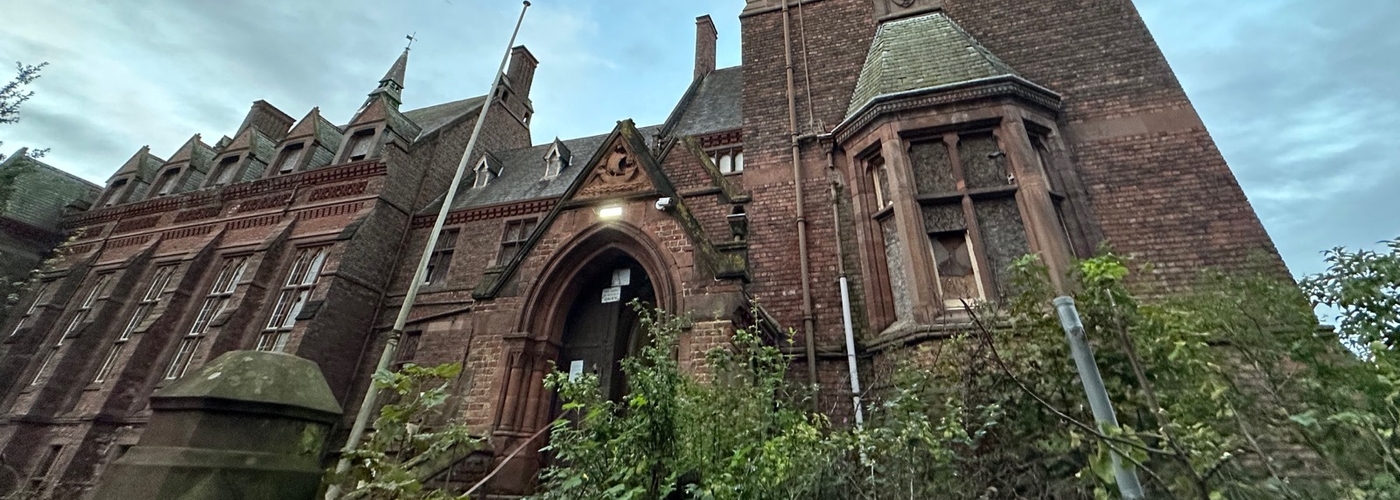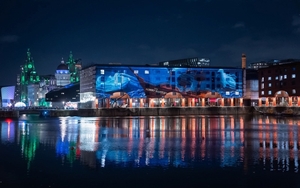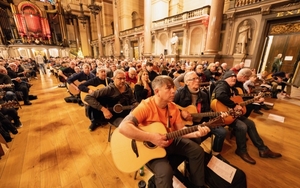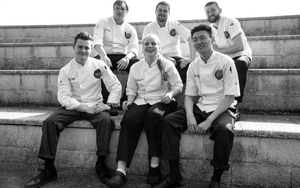Harley Young takes a tour of the abandoned Newsham Park Hospital and learns about its dark history
“Four thousand British sailors, every year, were killed at sea - only two thousand by drowning. The others were killed by the various accidents and mishaps that can happen on a sailing ship. Then there were people going to the tropics, visiting exotic places, in a time before there was medicine so they’d contract strange and unusual diseases that couldn’t be treated. Many of them never returned home,” said historian and Liverpool tour guide, Richard MacDonald.
He’d gathered us all together in the main hall of Newsham Park Hospital, a derelict Victorian building originally known as Liverpool Seamen's Orphan Institution which later became a psychiatric hospital (referred to as a ‘lunatic asylum’ back then).
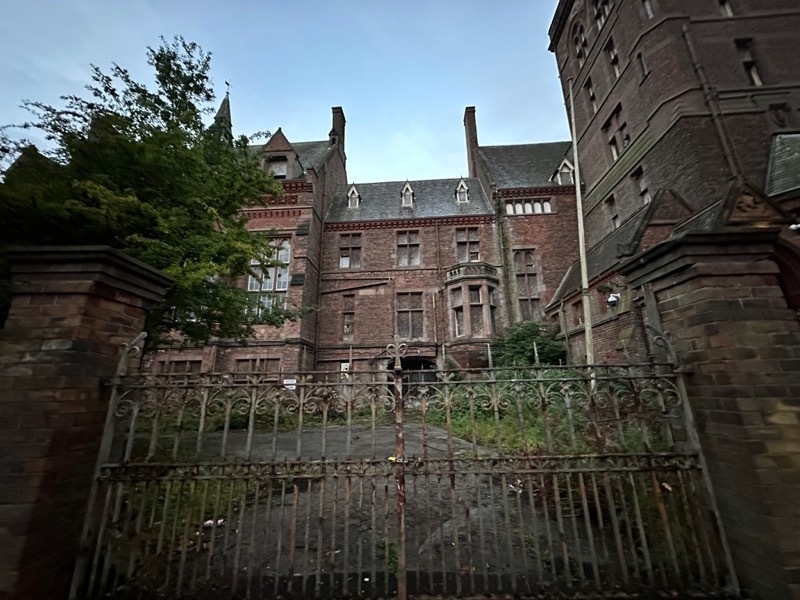
Could this have been from someone trying their best to resist being dragged off for another excruciating ‘treatment’? Who knows.
He explained that, during the 1800s, the average family had around five children. The sailor out at sea was the main bread-winner of the household and, if he didn’t return from sea, the family wouldn’t receive any funds to support them, inevitably leaving mothers in a difficult situation deciding which mouths they could afford to feed.
In 1868, a group of 10 rich Liverpool ship-owners banded together, each donating £500, to establish the institution designed to support the orphaned children of men out at sea. In 1869, the orphanage was opened in temporary rented accommodation on Duke Street with Liverpool Town Council granting 7,000 square yards in Newsham Park to set up a more permanent home in 1870.
Richard reminded us that the mothers who gave up their children to the orphanage during this time didn’t do so out of choice, but out of necessity. They’d often keep their youngest child at home, send their eldest to work, and the middle three were sent to institutions like this one.
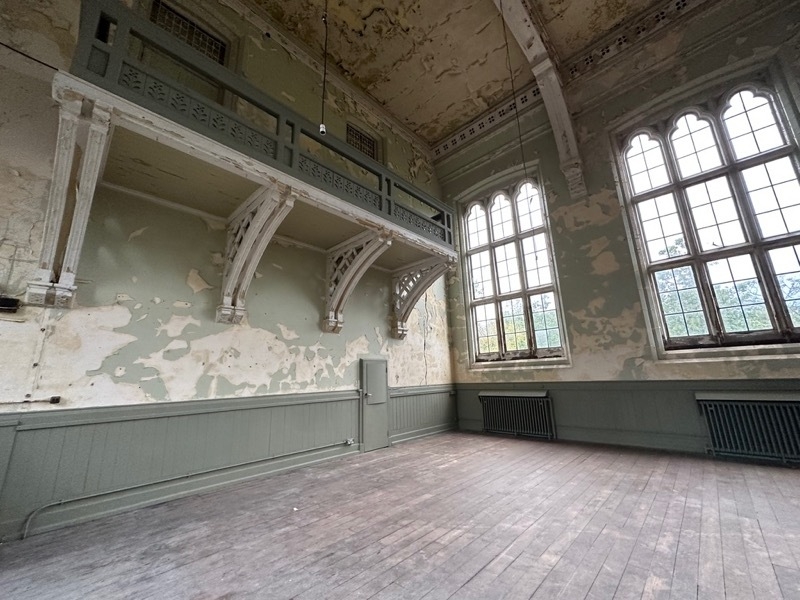
As I looked around the vast and echoey hall where these children would have congregated for dinner, I observed the paint peeling from the walls and ceiling and wondered when the last time it had been tended. To the left of the hall, there’s a large balcony that looms over the entire room. I could only imagine the fear the children felt as a frightful matron bawled at them, ready to hand out a few lashings if they didn’t finish their meals.
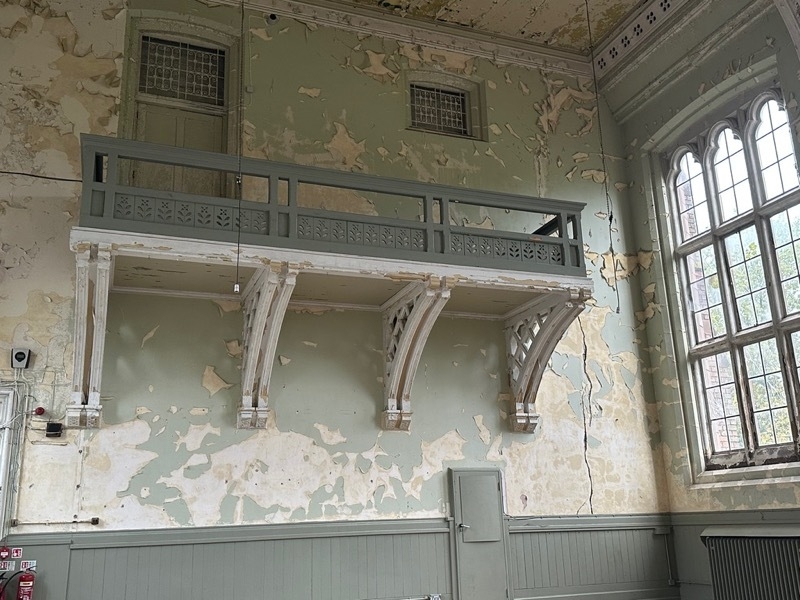
Richard shared a story of a young girl who lived at the orphanage being made to eat carrots out of a floor grid she’d used to dispose of her soup in the hopes of not being found by one of the orphanage carers. This was a horrific memory during those key developmental years the woman kept with her all her life.
Post-war, on 27 July 1949, the orphanage closed down and reopened five years later as Newsham Park Hospital. The hospital had its own psychiatric department and received an influx of patients with severe mental health issues. So many, in fact, the hospital stopped taking on new patients.
In 1992, nearby Rainhill Lunatic Asylum was closed and the remaining patients and staff were relocated to Newsham Park Hospital where a £1.6 million development was made to house the new residents. All records and patients of staff were closed for 100 years in 1997 when the hospital finally closed.
Since then, the building has stood empty, only opening its century-and-a-half-old doors for the occasional tour from ghost hunters and curious folk interested in dark and macabre medical history. That definitely includes me.
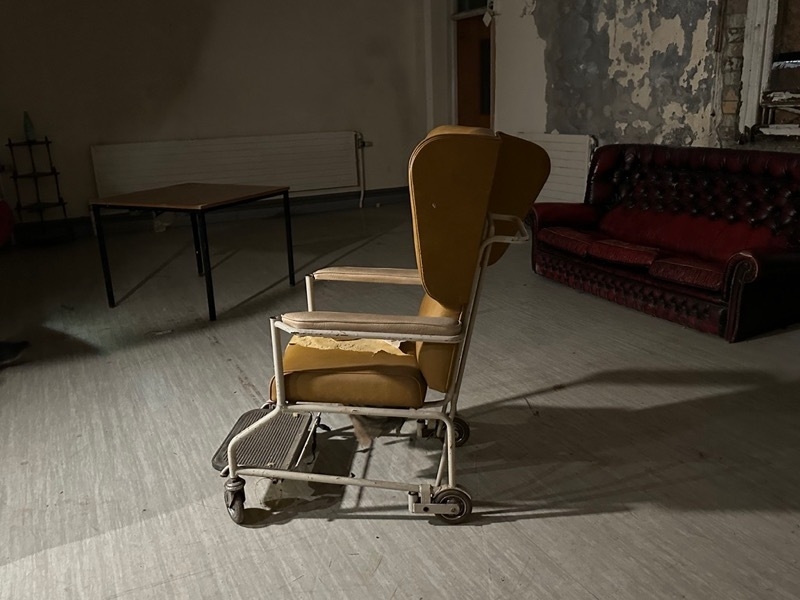
We continued on our tour of the hospital, using our phone torches to guide our way through the powerless carcass of the building, huddling together to avoid getting lost in the maze-like premises.
One set of double doors led through to the dayroom where patients would have been wheeled in chairs (some of which are still there) and left for hours on end. One corridor had a metal gurney and an unsettling smell to it, while a room off to the side still had the machine used for shock therapy and a vacant chair. A stark reminder of the terrifying treatments that were once used on people suffering from mental health issues.
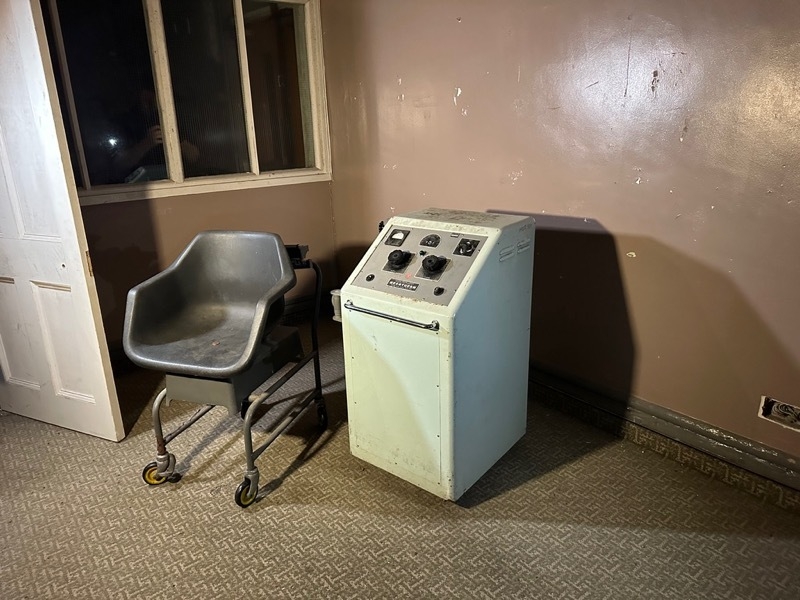
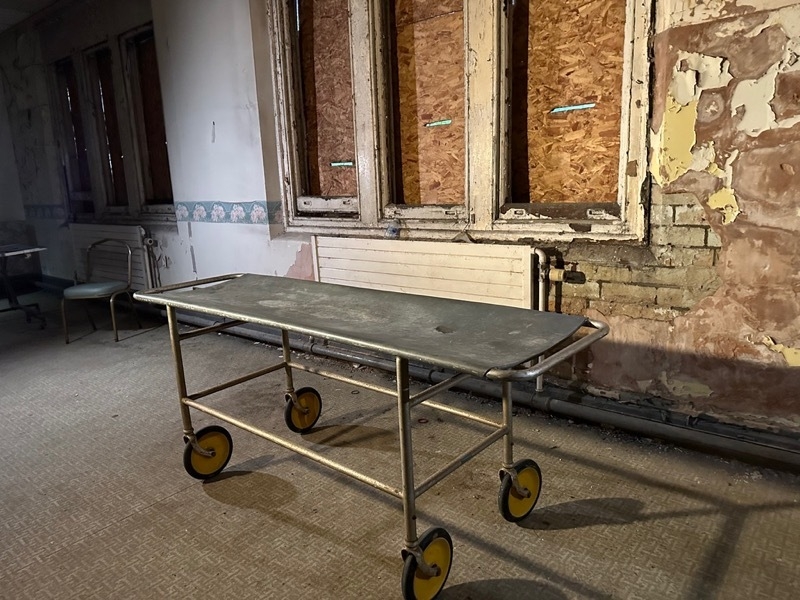
We stopped at the bottom of a stairwell that winded up into the darkness, opposite an equally eerie and seemingly never-ending corridor that had a discarded chair in the middle.
“The paint is peeling, the windows are letting up, but it’s a solidly-built building and it’ll be here for a long time,” reassured Richard as he asked us all to be careful as we made our way up the stairs due to the lack of light. He added: “Don’t trust these and certainly don’t put all of your weight on them,” as he pointed at the wobbly safety barriers that had been erected at the far-side of the staircase; presumably put there to stop patients from throwing themselves off.
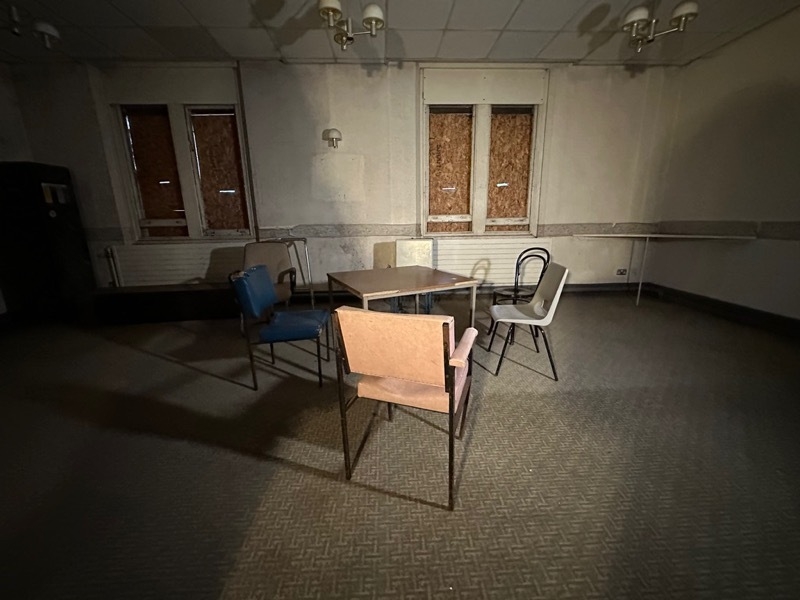
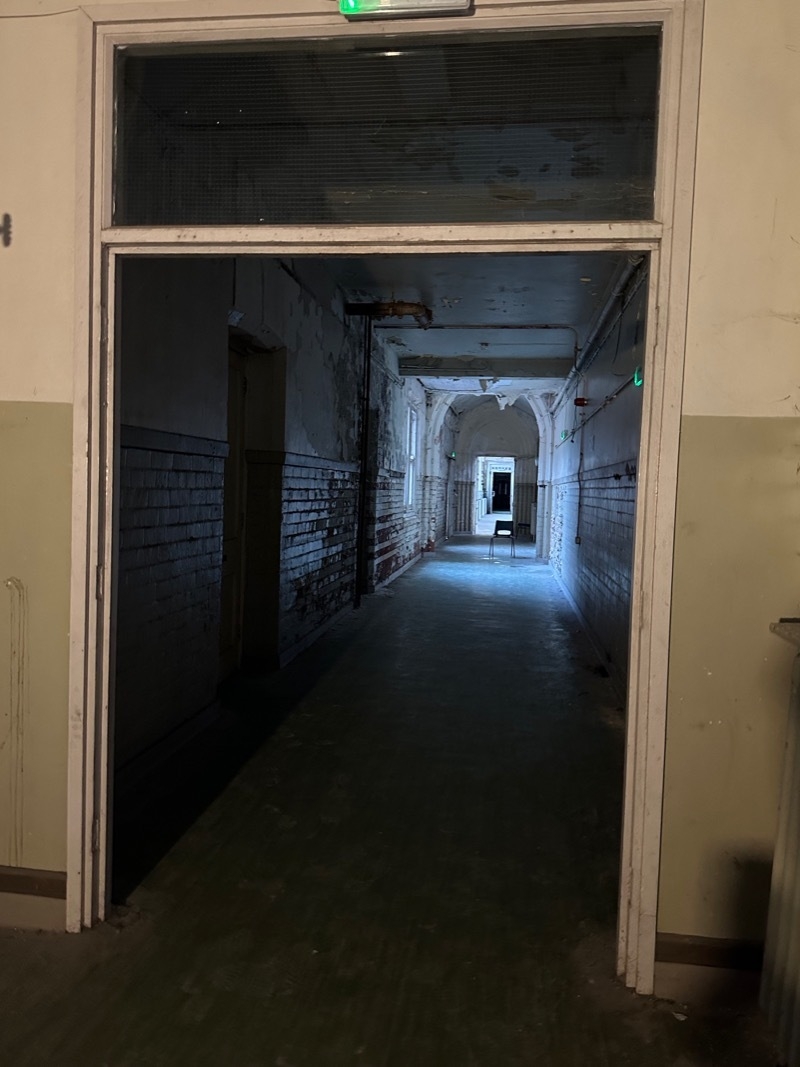

Upstairs on the second floor, a dark smudged handprint stained the wall. Could this have been from someone trying their best to resist being dragged off for another excruciating ‘treatment’? Who knows?
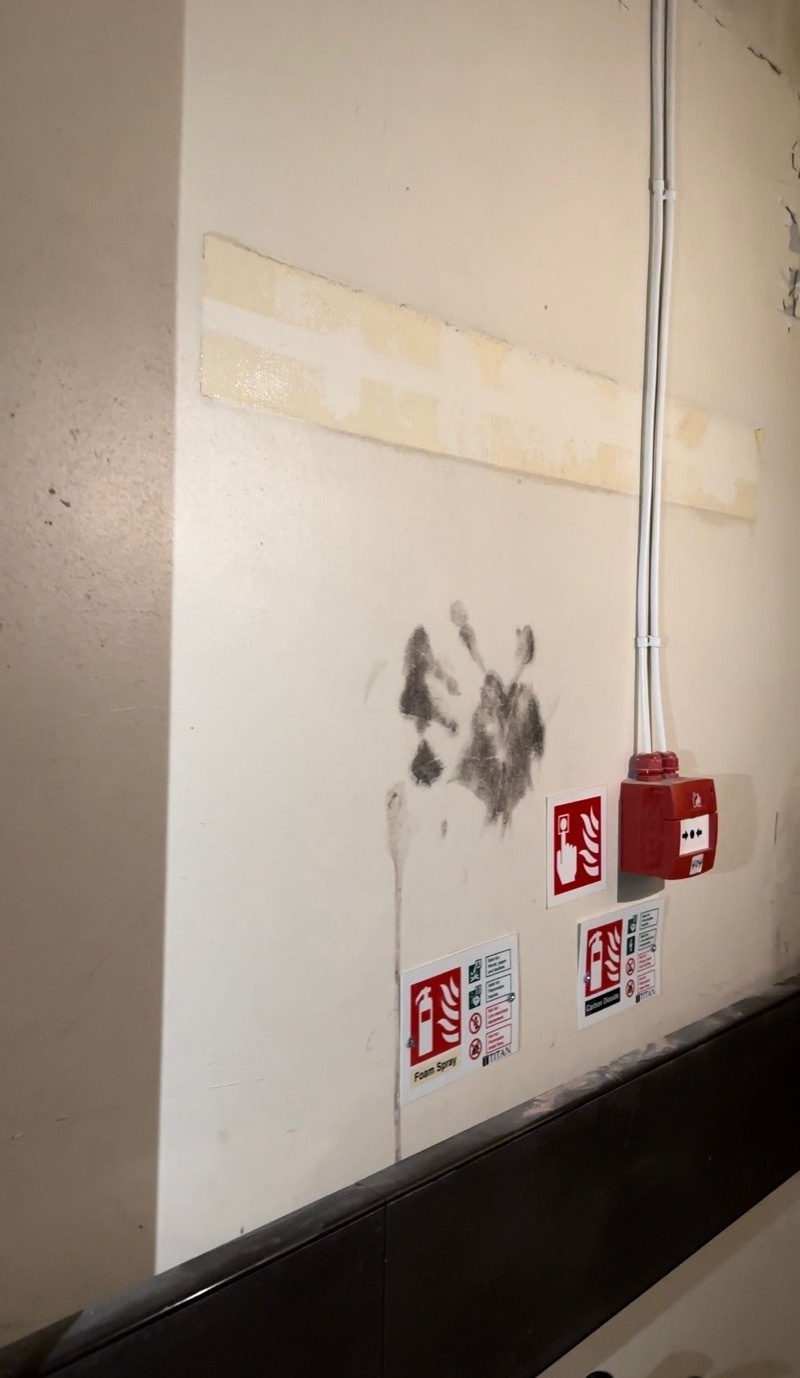
In the eaves of the building, we were trudged along the the 'naughty boys corridor' - a row of cupboards with little more than enough room to turn around in. Back when the building was an orphanage, any boys that were caught misbehaving were locked away and left until they had learned their lesson.
Richard encouraged us to “open up the doors, look in” and see how small the spaces are in which the young boys would have been confined, saying he imagined there’d have been “a lot of sorrow in this corridor.”
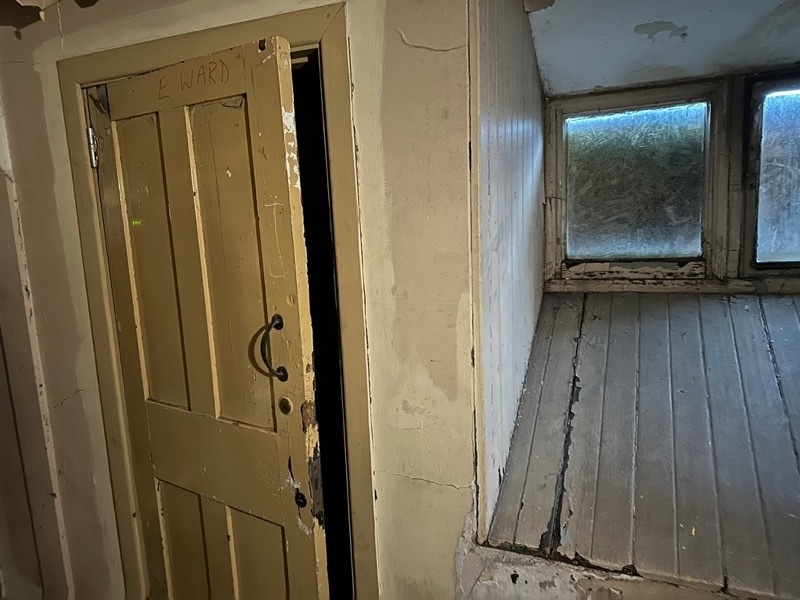
Heading over to the girl’s dormitory, the temperature shifted to an icy cold and another large room with a few sparsely scattered chairs revealed themselves. A handful of bathrooms with tubs full of bird muck and sinks and toilets hanging onto the walls by a thread reminded me just how many people at any one time would be expected to share these spaces.

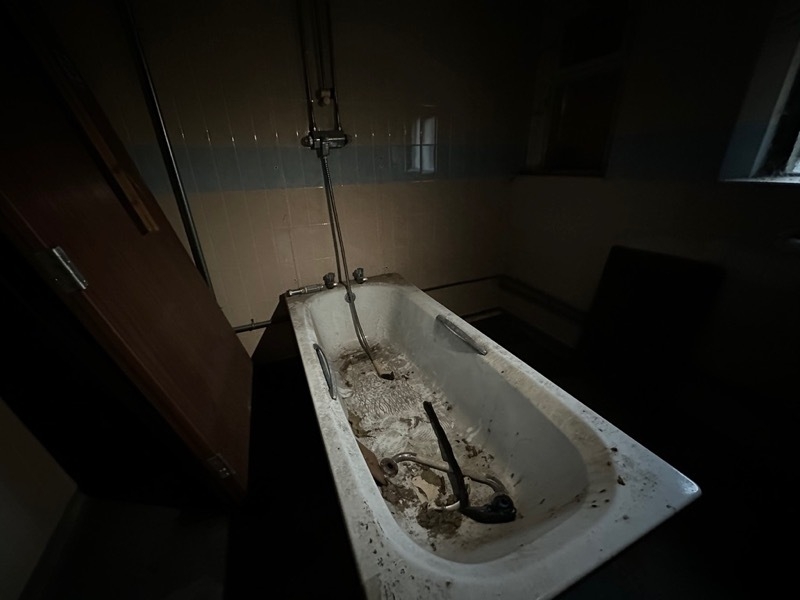
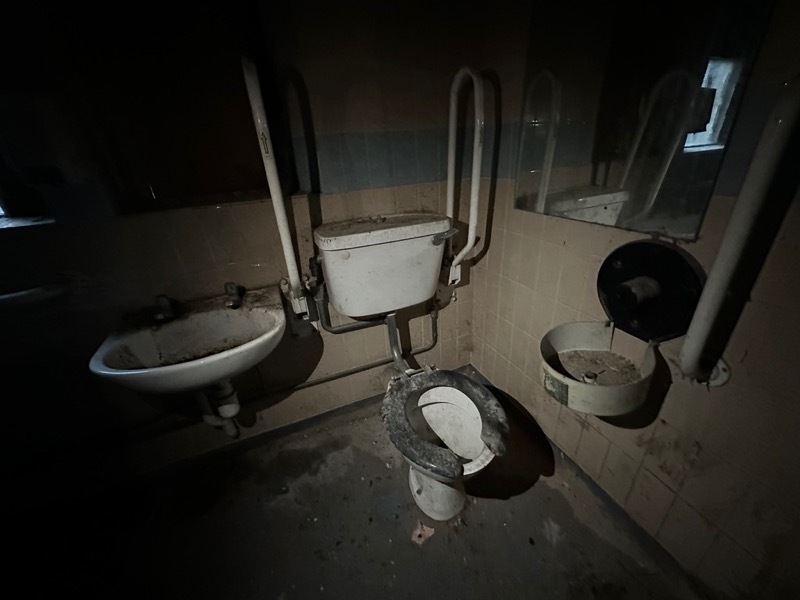
As we walked towards the newer side of the hospital, we stopped in another large room with crash barriers adorning the perimeter. A few members of the tour started to feel really uncomfortable here and noted how the atmosphere had shifted.
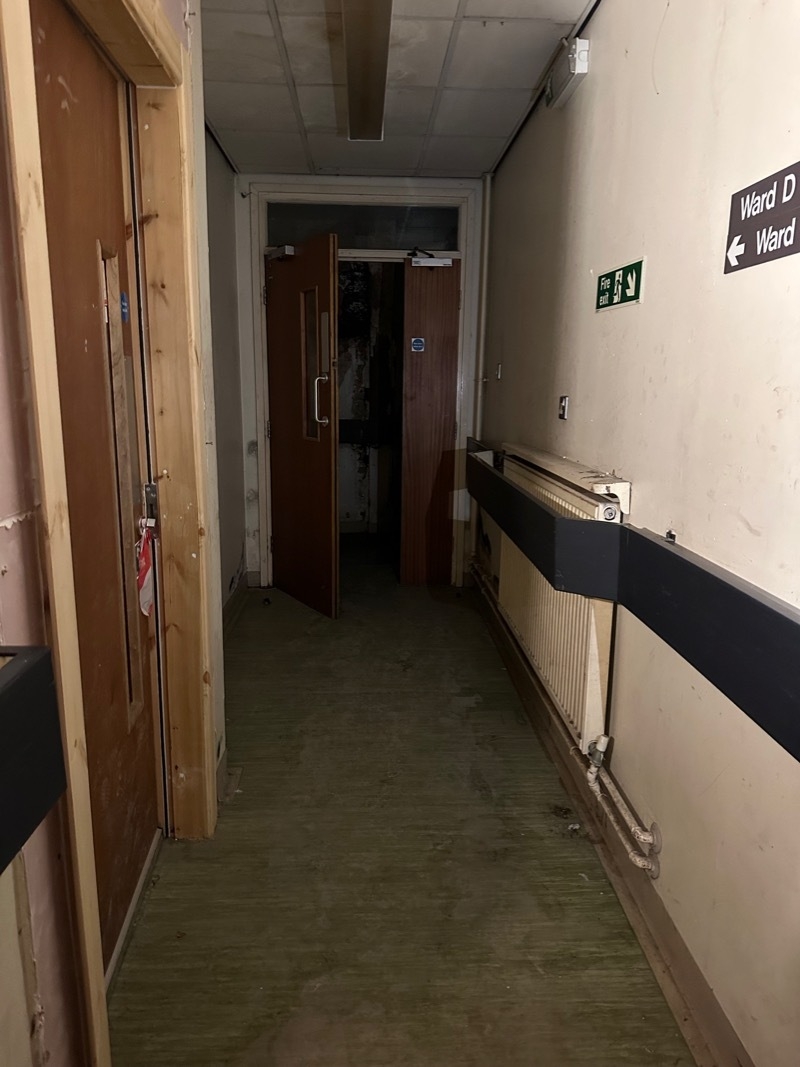
Journeying back down another dingy and decrepit stairwell, Richard led us by an old-fashioned, metal lift shaft with a disturbing warning sign above it and into yet another creepy corridor. This place is full of them.

Peering through a window I shone a light and audibly gasped as a room full of chairs came into vision. There’s something incredibly unsettling about a room of 40 or so chairs all facing the same direction. I imagined, if I looked for too long, there’d be someone (or something) sitting in one of them staring straight back at me.

Outside the room full of chairs was something even more disturbing. A metal coffin on wheels, used for the quick removal of any patients who had succumbed to their illnesses - or worse, died of old age after spending years confined in the hospital.
Richard told us that, in the next block over, there was an incinerator and morgue. As well as being used to heat the hospital, the incinerator would have also been used to discard bodies.
A man who had joined the tour and mentioned visiting the building a number of years ago seemed visibly shaken by this. He mentioned the possibility of coming into the hospital and never leaving, not even to be buried. Here you could disappear without a trace.
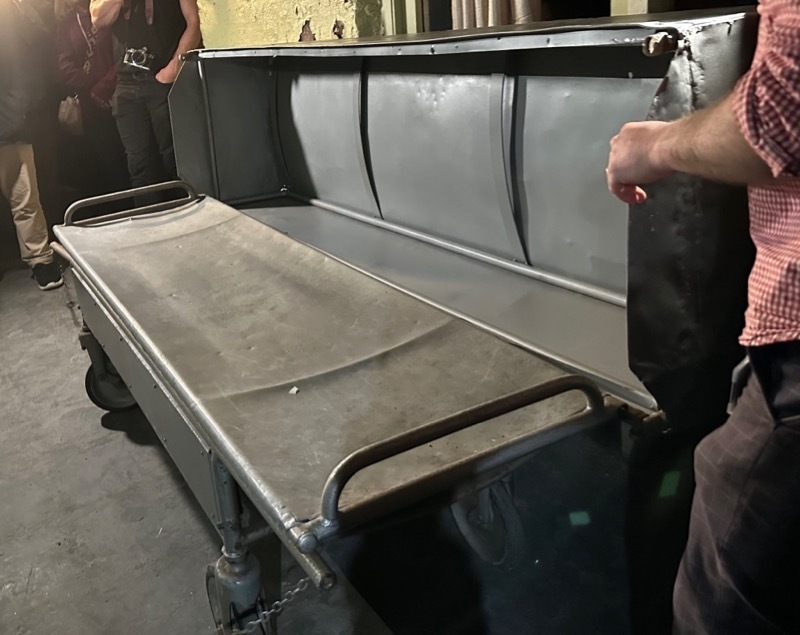
Our tour ended in the courtyard where we were able to take in the sheer scale of the building and retrace our steps from the outside in.
At the far end of the yard was a building we couldn’t access, but Richard believes it was used as an old education facility for the orphans before being turned into nurses' accommodation when it became the hospital. A sculpture of a young boy holding a toy boat still hangs above the doors.
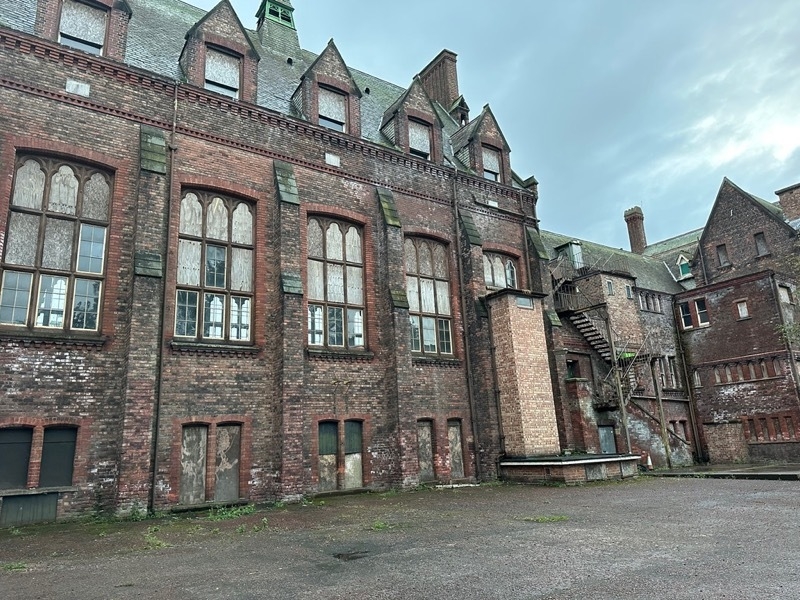

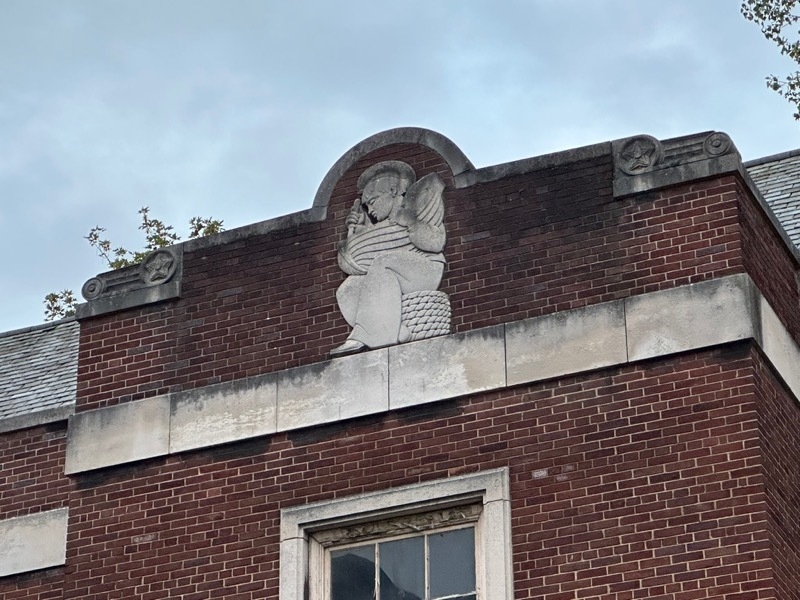
Asylum Entertainment Limited are very proud to annouce who they have signed to design the attractions for Newsham Scream Park, creating a truly blood-curdling Halloween experience. AtmosFEAR! Scare Entertainment are one of Europe's biggest producers of scare entertainment mazes, attractions and shows.
Running from Friday 13 October to Sunday 5 November across selected dates, this immersive horror experience takes over three key areas of the abandoned Victorian building, adding a whole new element of fear to the place.
Scare attractions are aptly named, including ‘The Orphanage’ and ‘Insanitorium’, and will plunge guests into a four-dimensional living story complete with mazes, live actors and high-impact effects. This multi-sensory attraction is a great opportunity to explore the deepest, darkest bowels of the historic site. The above activities are suitable for those 14 and over, but the ‘HELLuminati’ experience is strictly 18 and above only.
Jason Karl, Creative Director at AtmosFEAR! Scare Entertainment, says “We are excited to bring Newsham Scream Park to life by creating three different attractions in such a unique space.”
Click here for Newsham Scream Park tickets.
Newsham Park Hospital, 11B Orphan Drive, Tuebrook, Liverpool, L6 7UN
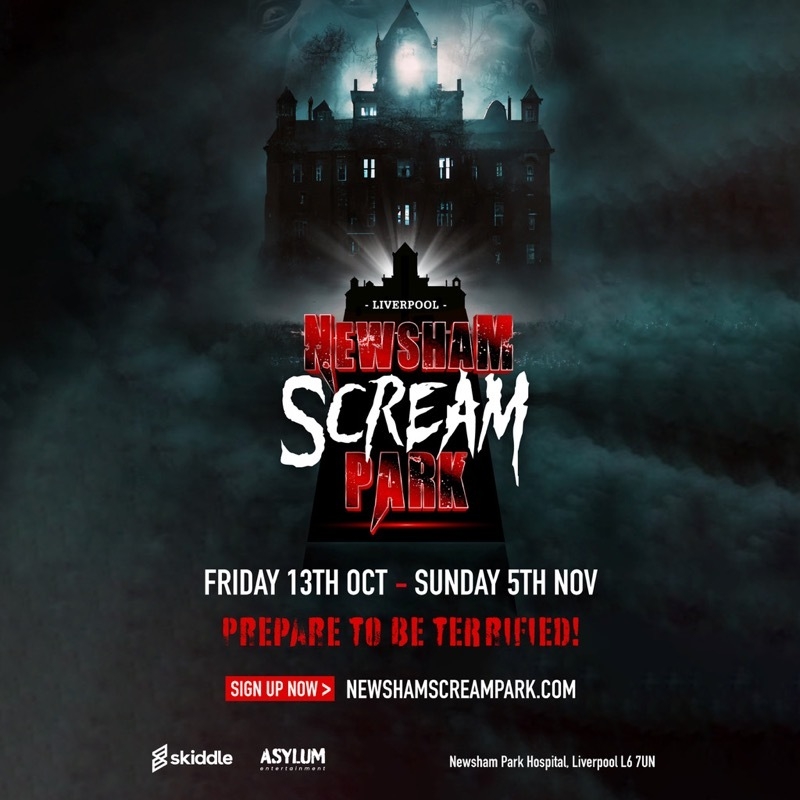
Follow Harley Young on X @Harley__Young
Read next: Love Lane plans: good but why not build much higher?
Read again: Picture-perfect: a stay at Assheton Arms in Downham
Get the latest news to your inbox
Get the latest food & drink news and exclusive offers by email by signing up to our mailing list. This is one of the ways that Confidentials remains free to our readers and by signing up you help support our high quality, impartial and knowledgable writers. Thank you!






